 |
SRGC Bulb Log Diary |
| Home Recommend This Site To A Friend |
|
BULB LOG 16 16th April 2003
The wind has dropped and we are enjoying some warm sunny days just now, it is great to be in the garden on days like this enjoying the plants and the birds. We have had a flock of 30 to 40 waxwings in the garden most days for the last few weeks, they have just about finished the last of the berries and I suspect they will be heading off to Scandinavia soon.
Erythroniums are the plants of the week and I will start with Erythronium americanum.
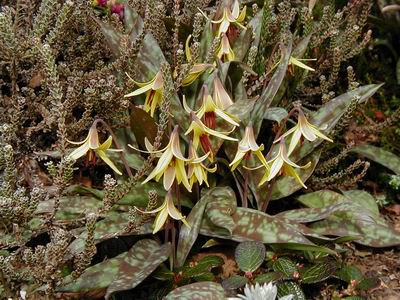
Erythronium americanum pw Here I show the one we call our 'flowering form' but, as we have raised several other forms that also flower well, we should really think about applying a cultivar name to this form as it is still our best clone, it is compact and has very well marked leaves. This is a plant that has a reputation of not flowering very well and there is a clone that has been in the UK for a very long time that spreads all over but rarely produces flowering sized bulbs. 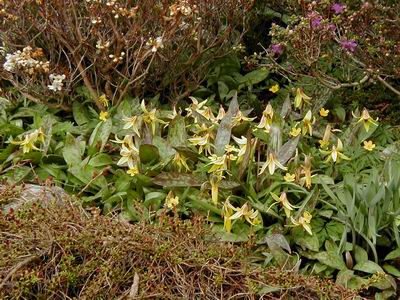
Erythronium Americanum pb Just like a plant to call you a liar... this is the 'prolific clone that does not flower well' - this year we have 36 flowers on one patch, this is the best it has ever been. The question that I am asking myself now is why? Has it reached a certain maturity or was it anything to do with last year being the wettest on record or is it something else. I do know that if some other bulbs, like narcissus, do not get enough moisture when they are growing the bulbs break down into lots of small bulblets instead of a nice big flowering sized one - could this be the problem with this clone? I will have to wait until next year to see. 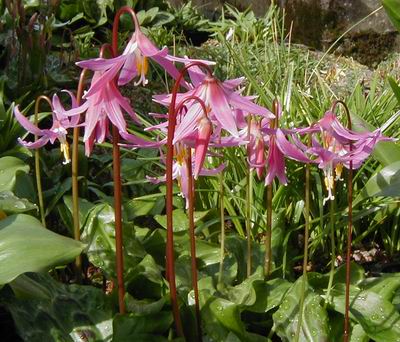
Erythronium revolutum 1 We have hundreds of Erythronium revolutum in flower all are beautiful and it has to be one of the best bulbs for any garden. The flower colour and the markings on the leaves vary quite a lot and I think my favourite is a dark flower over well marked leaves. 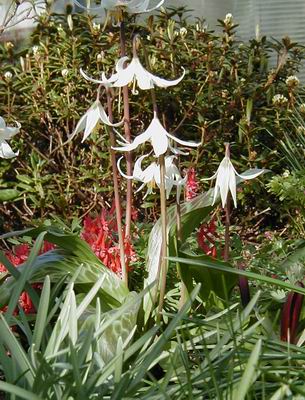
Erythronium oregonum 1 Erythronium oregonum is a perfect companion to E revolutum a plant of similar stature but with white flowers over well marked leaves. I find it slower to build up numbers of this desirable species than the E. revolutum which seeds around much more freely. I am selecting oregonum seedlings that form clumps so we can get vegetative increase as well as seed. We are also finding many hybrids in our own seedlings, all so far are at least good and some are wonderful plants. 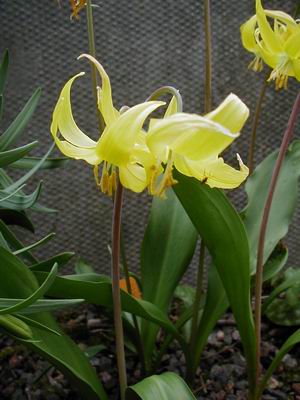
Erythronium grandiflorum Erythronium grandiflorum has beautiful yellow flowers over plain green leaves. It has a reputation of not being a good flowerer but we have never had this problem, maybe growers in the hotter regions in the south find it difficult. Again we have several lots of seed raised plants all are free flowering and all are slowly making clumps. 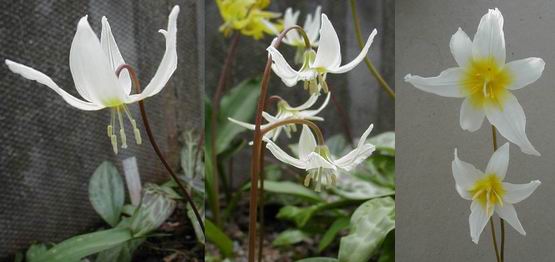
Erythroniums citrinum,howelii & helenae From the left we have three closely related species which are all similar to E. californicum. E. citrinum is often represented in the UK by hybrids which while nice are not the pure species. This is from wild collected seed and we can sort out all our hybrid forms now. The problem is that most Erythronium hybrids are fertile and as they hybridise freely in the garden it is sometimes difficult to keep a pure stock of a species. Howelii is very similar to citrinum with only botanical differences to separate them (howelii lacks the appendages at the base of the petals). E. helenae is a great beauty with a deep yellow throat which extends well up the nicely scented flower, the style is usually bent at right angles. 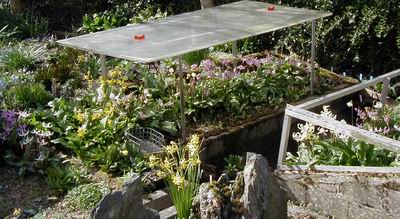
Erythronium frame cover We now have the cover on the Erythronium frame this greatly increases the seed set that we get. It gives the flowers protection from the wet cold weather that we often get at this time of year and it also greatly increases the number of flying insects that visit the flowers and do the pollination. 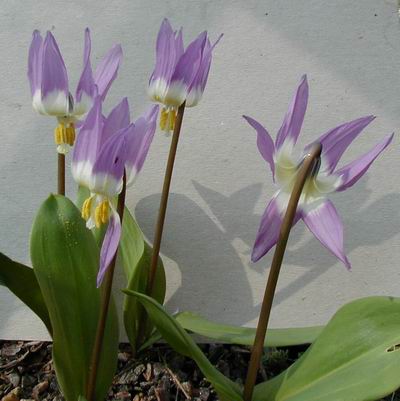
Erythronium sibericum Just to show that not all the best Erythroniums are from the North American Continent here is a lovely form of Erythronium sibericum which was collected in the Altai Mountains. And just to show that I still have eyes for plants other than Erythroniums I will leave you this week with a plant that I think of as being very Jurassic looking. 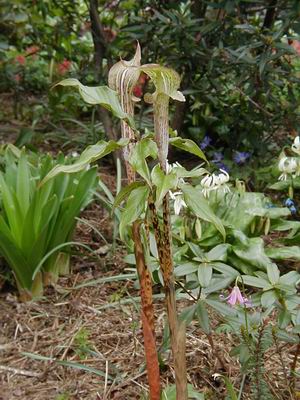
Arisaema nepanthoides ^ back to the top ^ |